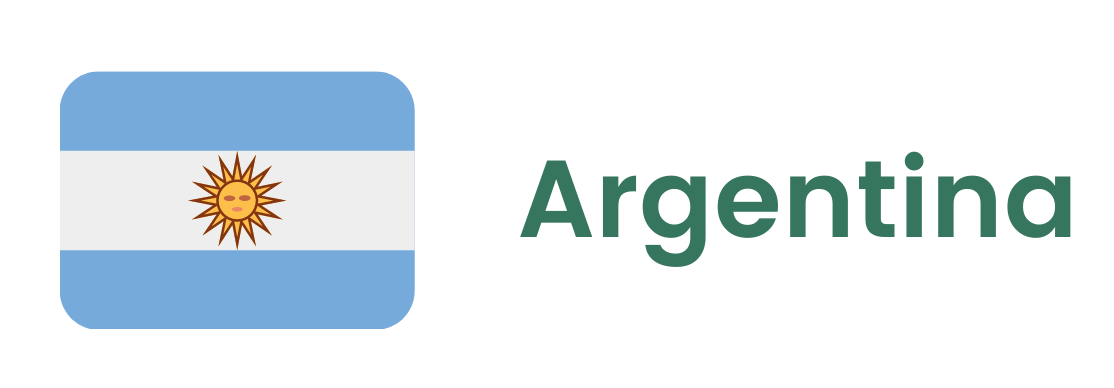Cocoa Exports Grew by 170% in June of 2024 in Peru

Beef consumption should be the lowest in 100 years, at 44.8 kg/inhabitant. This is due to economic recession and inflation, which reached 280% from May 2023 to May 2024. A study conducted by the Rosario Stock Exchange indicated that “the total consumption of beef, poultry and pork in Argentina should be around 105.7 kg per inhabitant in 2024, which means that each person will consume 7 kg less of meat in 2024 when compared to the average of the last ten years”. (BCR)
After the resignation of Fernando Vilella, Sérgio Iraeta is in charge of the Secretariat of Bioeconomy, which will once again be named Secretariat of Agriculture, Livestock and Fisheries. (Secretariat of Bioeconomy)
The 2023/24 soybean harvest reached 50.5 million tonnes. This is the largest soybean harvest in the past five years, more than double the previous season. Planting was around 17.3 million ha (+7% compared to the previous season). “The recovery in production levels is expected to boost the chain’s contribution to the Argentine economy, reaching US$ 17,223 million in gross soybean products. This is an increase of 104% when compared to the last agricultural season”. (Buenos Aires Grain Exchange)

There was a record in the number of workers in agribusiness, reaching 28.6 million people. 1H/2024 stands out, with a 3% increase (of approximately 827 thousand people) from January to March when compared to the same period of 2023. These numbers were driven by employees with formal contracts, workers with higher levels of education and more female participation in agribusiness. (Cepea; CNA)
With a growth of 7.1% in the last 5 years, the estimated global production of chicken meat reached 104.1 million tonnes in July. Brazil was second place in chicken meat production, accounting for 14% of the total. The country stands out due to its certifications for export, quality and health criteria. The main importers were the United Arab Emirates, Japan, China and Saudi Arabia, representing 50.8% of the traded value. (Seapa; USDA)
36 agricultural machines were granted to approximately 34 cities in Porto Alegre, State of Rio Grande do Sul, to assist farming operations. The machines are worth US$ 1.6 million, being 26 tractors, 6 motor graders, 3 hydraulic excavators and 1 backhoe. 17 agricultural machines were also delivered in Porto Velho, State of Rondônia and 16 in municipalities in the State of Espírito Santo. (Ministry of Agriculture)
Cotton lint prices increased in July, after two months of decline (-23.8%), reaching US$ 0,78/lb, due to the still limited supply in the Brazilian market and the increase in demand. The country has reached 9.5% of the harvested area so far, with highlights for the States of Mato Grosso and Bahia, with increases of 7% and 16%, respectively. (Cepea; Conab)
The System of Credit Unions of Brazil plans to offer around US$ 986.8 million in rural credit during the 2024/25 season, 10% more than in the previous season. US$ 757.6 million should be offered through financing operations, US$ 277.2 million through the National Program for Strengthening Family Agriculture – Pronaf and US$ 1.5 billion via National Support Program for Micro and Small Enterprises – Pronamp. (Sicoob)


The National Forest Corporation held a training course for professionals from Latin America and the Caribbean on “Comprehensive rehabilitation of devastated watersheds and soils“, providing information about soil recovery, prevention and risk reduction of environmental disasters. Professionals from Argentina, Bolivia, Costa Rica, Cuba, Paraguay, Peru, Mexico, among others, participated. “For droughts, restoration and floods, watershed management is the solution”, said Samuel Francke, the course’s coordinator. (Conaf)
From January to May of 2024, fresh fruit exports reached US$ 4.3 billion FOB, with 1.5 million tonnes, being 85.5% of the total fruit exported in the country. Highlights include cherries, with 341 thousand tonnes, and grapes, with 513 thousand tonnes, being the most exported fruit. 12.1% of the total exported was processed fruit and 1.8% were nuts. (Odepa)

The granting of lands by the government advanced by only 0.2% from May to April. By the end of 2024, the objective is to grant 400,000 ha, but so far only 6% was granted. After protest by farmers, the National Land Agency declared that they purchased around 25,000 ha in June. (ANT)

Ecuador has authorized the import from Brazil of oils and fats from poultry and ruminant animals, destined for animal feed. The country has imported around US$ 140 million in agricultural products from Brazil, with highlights to forestry products, flour and grains. (Ministry of Agriculture of Brazil)

Coffee farmers in the south had 80% of their crops affected by drought and are requesting the government to declare a state of emergency. In May, the average temperature was the hottest since 1953. (SMN; Tapachula Coffee Growers Union)

In the 1Q/2024, exports of agricultural products grew by more than 9.7%, reaching US$ 2.5 billion. The main exported products were grapes, blueberries, avocados, bananas, cocoa, etc. (Midagri)
Cocoa exports in June of 2024 grew by 170% when compared to the same month of 2023, worth US$ 82 million. There was an increase of 48% in volume, totaling 12.8 thousand tonnes. The main purchasing countries were Spain (21%), the US (16%) and Malaysia (13%). (Fresh Fruit)
![]()
Montes del Plata, a pulp mill company, has generated an added value of US$ 984 million and around 6,400 jobs in 2023. In its Sustainability Report the company reported that 100% of its forests are certified and that it has 90,000 hectares of preserved natural areas. (Montes del Plata)

READ MORE:

